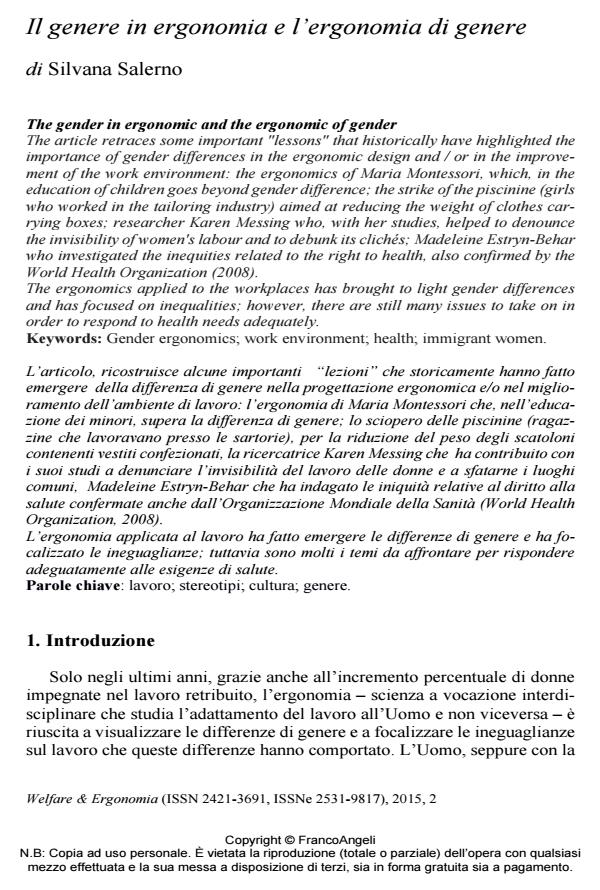The gender in ergonomic and the ergonomic of gender
Journal title WELFARE E ERGONOMIA
Author/s Silvana Salerno
Publishing Year 2017 Issue 2015/2
Language Italian Pages 11 P. 13-23 File size 249 KB
DOI 10.3280/WE2015-002002
DOI is like a bar code for intellectual property: to have more infomation
click here
Below, you can see the article first page
If you want to buy this article in PDF format, you can do it, following the instructions to buy download credits

FrancoAngeli is member of Publishers International Linking Association, Inc (PILA), a not-for-profit association which run the CrossRef service enabling links to and from online scholarly content.
The article retraces some important "lessons" that historically have highlighted the importance of gender differences in the ergonomic design and / or in the improvement of the work environment: the ergonomics of Maria Montessori, which, in the education of children goes beyond gender difference; the strike of the piscinine (girls who worked in the tailoring industry) aimed at reducing the weight of clothes carrying boxes; researcher Karen Messing who, with her studies, helped to denounce the invisibility of women's labour and to debunk its clichés; Madeleine Estryn-Behar who investigated the inequities related to the right to health, also confirmed by the World Health Organization (2008). The ergonomics applied to the workplaces has brought to light gender differences and has focused on inequalities; however, there are still many issues to take on in order to respond to health needs adequately.
Keywords: Gender ergonomics; work environment; health; immigrant women.
- Introduzione Silvana Salerno, Valeria Quaglia, in WELFARE E ERGONOMIA 1/2022 pp.31
DOI: 10.3280/WE2022-001004
Silvana Salerno, Il genere in ergonomia e l’ergonomia di genere in "WELFARE E ERGONOMIA" 2/2015, pp 13-23, DOI: 10.3280/WE2015-002002